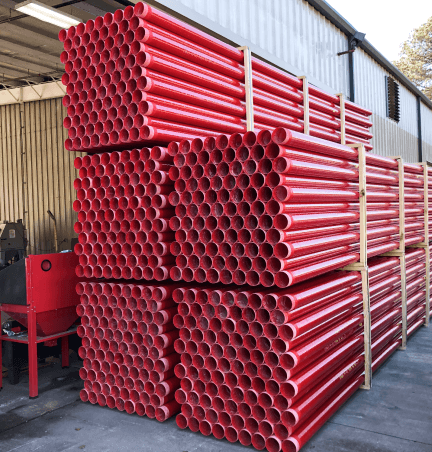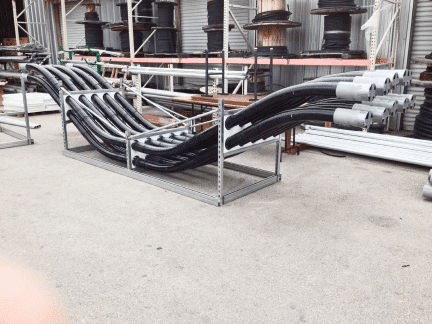With more than 50,000 students on campus, Texas A&M University has massive electrical infrastructure needs, and they frequently need to work on a deadline. When they had to upgrade the power supply for their football stadium, the university called EAS Contracting to get it done fast.
CHALLENGE
The school needed underground electrical conduit installed from one end of its campus to the other. They needed it done before spring break was over, leaving them less than two months to complete the project. Before this project, Kyle Field was serviced by an aging, damaged, and unreliable 15 kV circuit—which is unacceptably risky for a college football stadium in Texas. The engineers’ specifications called for 6” galvanized rigid steel conduit to be placed where the duct bank tied into the manhole to avoid the risk of exposing the cables to shear. The previous duct bank circuits had been damaged due to improper protection, and all concerned parties needed to make sure that did not happen again.
Logistically, these requirements—coupled with the strict deadline—presented a few problems. First, the rigid steel conduit suppliers made it very difficult to order all the necessary pieces and still meet the deadline. They wanted to produce all of the materials in one bulk order, and that would take far too long. Second, the heavy nature of rigid metal conduit combined with the size of the project meant that it would require a lot of manpower in a chaotic atmosphere. This scenario was a big problem considering the senior project manager’s budget—he knew it would be very difficult to get the project completed on time. EAS needed to find a way to safely guard the cables with the resources available while meeting the scheduled deadline.
SOLUTION
EAS’s distributor introduced the senior project manager to Champion Fiberglass, and it was clear right away that Champion was the answer to his problem. Champion could build the fiberglass conduit as quickly as EAS needed it, and its light weight meant an easier, quicker, and less expensive installation. Now the senior project manager had a new problem: convincing the engineers that the fiberglass conduit could maintain the integrity of the duct bank at the problematic shear point on top of satisfying regulatory requirements.
After meeting with the senior project manager and the Champion regional manager, the engineer quickly agreed that the Champion Fiberglass conduit would provide the cables with appropriate protection from shear.
RESULTS
EAS placed their order and had the materials they needed to begin work within two weeks. Champion got the senior project manager and his crew up to speed on the installation process at the job site within a matter of hours. Beyond the roughly 10% material cost savings, the lightweight fiberglass electrical conduit made the team’s entire project easier to complete. EAS only needed an eight-man crew and required less installation equipment on the job site, leading to a significantly faster installation without sacrificing efficiency or productivity. Kyle Field was ready—with time to spare.










